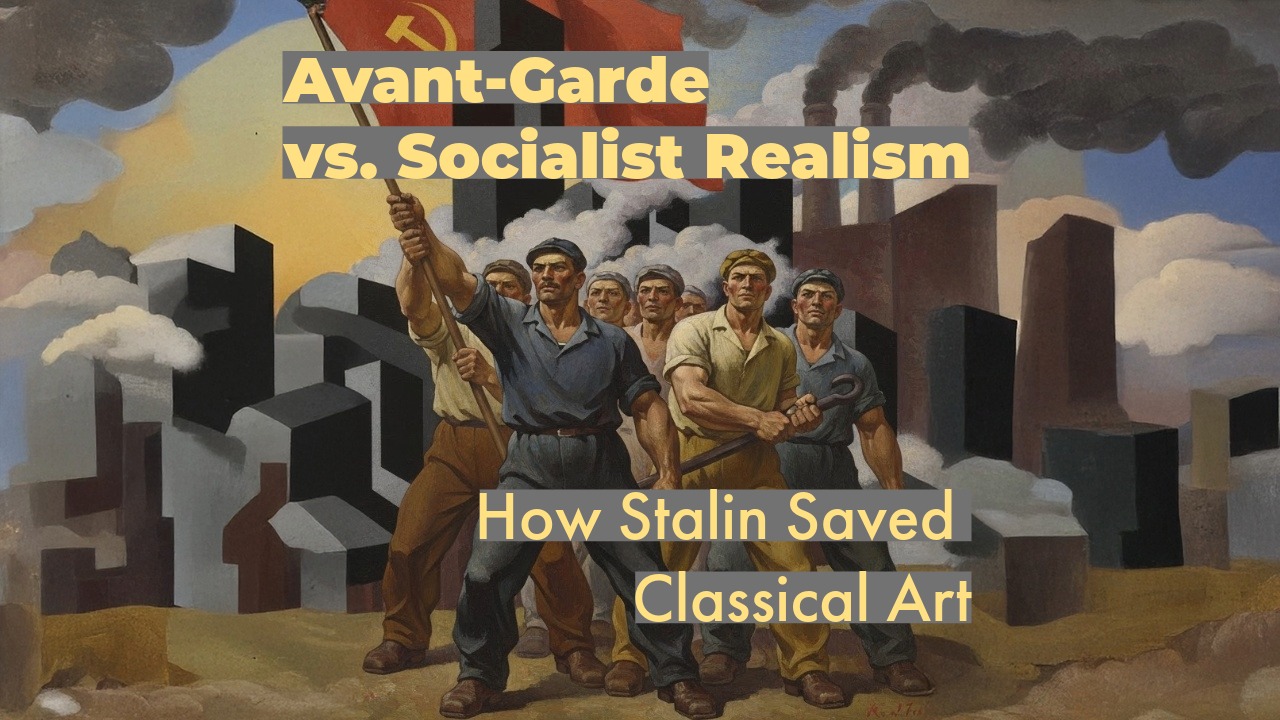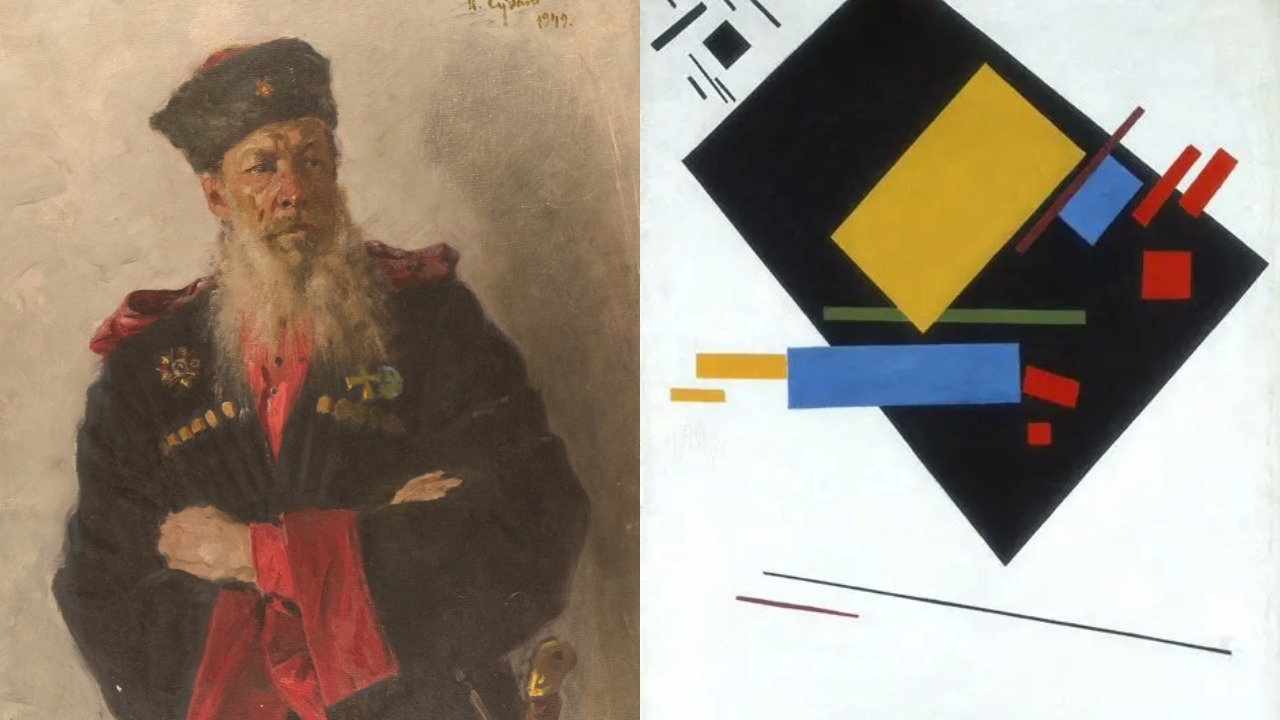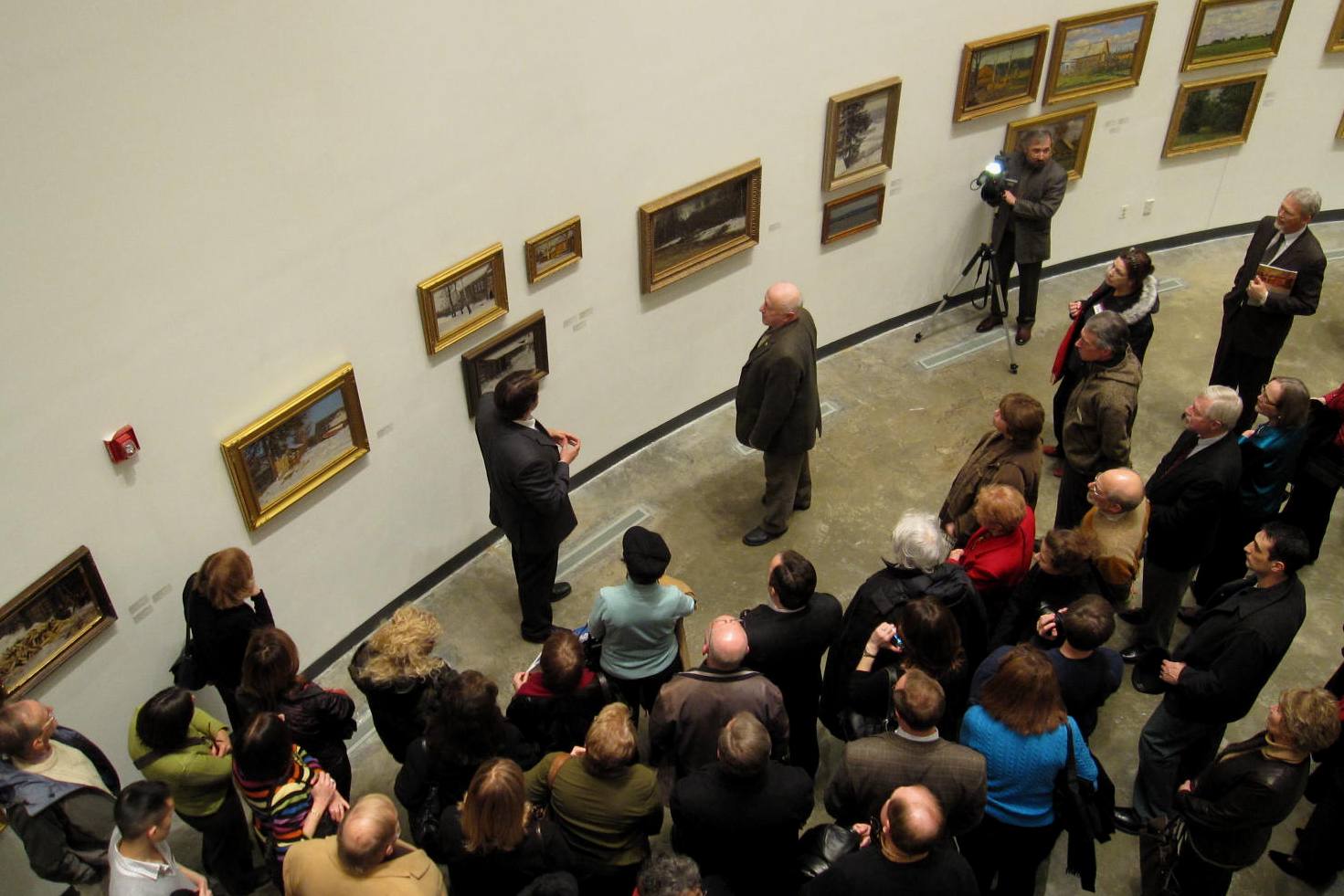Avant-Garde vs. Socialist Realism: How Stalin's War on Abstract Art Paradoxically Saved a Classical Tradition

When Western art history pictures the Russian Revolution, it often brings to mind the explosive, geometric abstractions of the Avant-Garde. Names like Kazimir Malevich and Wassily Kandinsky, and iconic works like the Black Square, have come to define the revolutionary artistic spirit of the early 20th century. This was an art of radical change, a "zero art" that tried to build a new world by erasing the old, much like the political upheaval of the Bolsheviks. But while the Avant-Garde gained international fame, it was the deep-rooted tradition of Realism that would truly endure in Russia, paradoxically preserved by the very state the revolution created. This is the story of how a clash of utopian ideas, the personal taste of leaders, and absolute state power intersected to protect an unbroken chain of classical artistic training that has all but vanished in the West.
Key Takeaways
- Avant-Garde vs. Realism: The Russian Revolution sparked a conflict between the radical Avant-Garde, which sought a completely new art for a new society, and the long-standing tradition of Realism.
- Leadership's Taste: The Avant-Garde's abstract style was personally disliked by Vladimir Lenin and later officially rejected by Joseph Stalin, who both favored art that was easily understandable to the masses.
- Socialist Realism: In 1934, Stalin mandated Socialist Realism as the official state art form. This doctrine required art to be realistic, relevant to workers, and supportive of the Communist Party's goals.
- Paradoxical Preservation: To produce the high-quality propaganda required by Socialist Realism, the Soviet state had to fund and preserve the classical art academies. This action protected a traditional training system that was fading in the West.
The Revolutionary Clash of Art Forms
The years following the 1917 Bolshevik Revolution turned art into a battlefield of ideas. The Russian Avant-Garde artists saw themselves as the artistic equals of the political revolutionaries and, for a time, became the official face of the new Russia. Artists like Malevich, Vladimir Tatlin, and Kandinsky joined Vladimir Lenin’s troupe as cultural bureaucrats and teachers. The new government even established radical art schools like VKhUTEMAS and INKhUK, where movements such as Suprematism and Constructivism thrived, aiming to transform views on art with precise geometry and an emphasis on space.
 From wikicommons
From wikicommons
These artists wanted a complete rupture from the past. As John Wurdeman, the only American graduate of the Surikov Institute, explains, during the revolution, Lenin partly patronized abstract artists because "the idea was to create a new art for a new society and to make a break with the past". For the Avant-Garde, this meant destroying the "wreckage of the real world" to create a new, purified reality from nothingness. Malevich’s Black Square was the ultimate symbol of this goal—an artistic abyss that consumed the past to make way for a new, "resanctified" space.
At its core, this was a clash of two opposing philosophies. The Avant-Garde's mission to create a "new art" was a direct assault on the 19th-century Realist tradition, which believed art's highest purpose was to mirror social truths and the human condition in a recognizable, narrative form. To the modernists, this tradition was stale, bourgeois, and tied to the old world they wanted to destroy. To the traditionalists, however, the new abstract art was a soulless, intellectual exercise, detached from the very people the revolution was supposed to serve. This fundamental disagreement over the purpose of art set the stage for the political intervention that would follow.
 Malevich's Black Square versus A Cossack Soldier by Pavel Sudakov
Malevich's Black Square versus A Cossack Soldier by Pavel Sudakov
Lenin's Preference for Understandable Art
Many in the new government embraced these modernist experiments, though Lenin himself was not so enthusiastic. While he initially supported the Avant-Garde as a clean break from bourgeois culture, his personal tastes were more traditional. Lenin believed that art belonged to the people and, therefore, must be understandable to them. He found the abstract forms of the Avant-Garde inaccessible and worried they were the work of "bourgeois intellectuals" trying to create a culture from "thin air".
This preference was deeply political, not just aesthetic. Lenin saw art as a powerful tool for agitation and education, one that must "unite the feelings, thoughts and the will of the masses and raise them". This view was famously captured after he visited an art commune. Upon seeing a realist painting there, Lenin remarked, "Now this I understand... and this the people will understand". Although he tolerated the modernists for a time, this statement signaled a clear preference that his successor, Joseph Stalin, would soon turn into an ironclad doctrine.
Stalin's Decree: The Mandate of Socialist Realism
After Lenin's death, Joseph Stalin transformed this preference into a rigid, official style. He shared the view that modernism was elitist and went even further, dismissing it as "bourgeois decadence”. In Stalin's view, as John Wurdeman notes, "this very abstract work... is actually more elitist than the paintings that came from the previous period which were of subjects that people could identify and connect with and if he wanted to be able to have influence on the people then he needed to be showing them something that they could connect with and emotionally relate to".
"I think his idea bringing back realism," Wurdeman continued, "was very similar to like in the Middle Ages, where if the Church wanted to have influence on the people, they could do that through frescoes on the walls, because a large population was illiterate and through images they could communicate."
So, in 1932, the state officially disbanded all independent artistic groups. Artists who refused to conform to the new doctrine faced public condemnation, loss of work, and, in the darkest years of Stalin's purges, imprisonment or even execution. By 1934, at the Soviet Writer's Congress, Socialist Realism was mandated as the sole art form of the Soviet Union. This new doctrine was not art for art's sake; it was a political machine for state propaganda.
The writer Maxim Gorky laid out its four core tenets: art must be Proletarian (relevant and understandable to workers), Typical (depicting scenes of everyday life), Realistic, and Partisan (supportive of the Party's goals). Artists were now tasked with creating an idealized, utopian vision of Soviet reality, a world of happy, heroic workers and wise leaders. Stalin famously described these artists as "engineers of souls".
A perfect example of this doctrine in action is Fyodor Shurpin's 1949 painting, Morning of Our Motherland. The work depicts a calm, confident Stalin standing before an endless, sunlit landscape of collective farms and new factories. It masterfully fulfills all four tenets: it is Realistic in its clear, academic style; it is Proletarian and Typical in its idealized depiction of the nation's agricultural and industrial might; and it is deeply Partisan, portraying Stalin not just as a leader but as the benevolent visionary responsible for this prosperity. It is propaganda made beautiful and easily understood.
An Unbroken Chain: The Paradoxical Preservation of a Tradition
Stalin's decree had a profound and paradoxical consequence. To produce the clear, realistic, and narrative-driven art that Socialist Realism demanded, the state needed artists trained in classical techniques. As a result, Stalin "took the teachers from the imperial academy that were the great masters from the 19th century and reinstated the art academy in St petersburg under the name of the Repin academy and in Moscow as the Surikov institute", noted Wurdeman.
 Kugach, Kugach, Kugach Exhibition at the Katzen Museum
Kugach, Kugach, Kugach Exhibition at the Katzen Museum
While Western art education was abandoning traditional, rigorous training in favor of modernism, the Soviet state was actively preserving it. John Wurdeman recalls feeling that in the US, the knowledge of "being able to interpret the world that we see around us... was all but lost in the west," because the "links had been broken in the chain of succession". In Russia, however, that chain remained intact. An oppressive political regime, in its quest for ideological control, had the unintended effect of creating a sanctuary for classical realist training. This state intervention forged an unbroken chain of artistic succession, linking the masters of the 19th century to the painters of the 20th and beyond, keeping a tradition alive that continues to produce artists of extraordinary skill today.
Frequently Asked Questions (FAQ)
Q1: What is Socialist Realism? Socialist Realism was the official state-approved art style of the Soviet Union from 1934 until its dissolution. It demanded that artists create idealized, realistic depictions of Soviet life that were understandable to the working class and supportive of the Communist Party's goals.
Q2: Why did Soviet leaders reject Avant-Garde art? Leaders like Lenin and Stalin believed abstract art was elitist, decadent, and inaccessible to the general population. They wanted
Q3: What happened to the Avant-Garde artists under Stalin? After Socialist Realism was mandated, Avant-Garde art was suppressed. Many artists were forced to adapt to the new style, while others stopped producing art publicly or faced persecution, imprisonment, and even execution for refusing to conform. Their experimental work was hidden away in state archives for decades.
Q4: What are the Repin and Surikov Institutes? The Repin Institute in St. Petersburg and the Surikov Institute in Moscow are Russia's premier art academies. They were re-established during the Soviet era on the foundations of the old Imperial Academy of Arts and became the centers for preserving and teaching the classical, realist tradition.

